OneUp Components Clip Pedals
Stated Weight (pair, with pins): 410 g
Platform Size (width x length): 80 x 90 mm
MSRP: $159.99 USD / $218.99 CAD
Blister’s Measured Weight: 207 and 207 g
Blister’s Measured Platform Size: 80 mm wide x 90 mm long
Reviewers:
- Zack Henderson (6’, 183 cm / 183 cm, 72.6 kg)
- David Golay (6’, 183 cm / 183 cm, 72.6 kg)
Test Duration: 7 months
Test Location: Washington
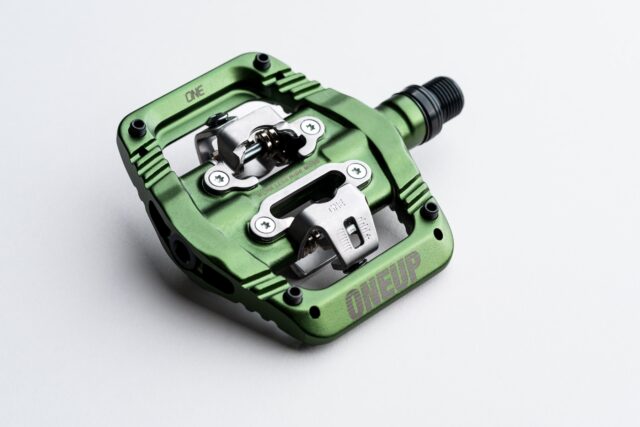
Intro
OneUp has slowly but surely expanded its components catalog, focusing on solid, no-nonsense parts at competitive prices. Their flat pedals have been around for years and have proven quite popular, and now OneUp is offering something for clipless riders, too. True to form, OneUp has taken a unique approach that manages to hit a reasonable weight while emphasizing dependability. So what has OneUp done to sway folks from one of the more established clipless pedal systems out there?
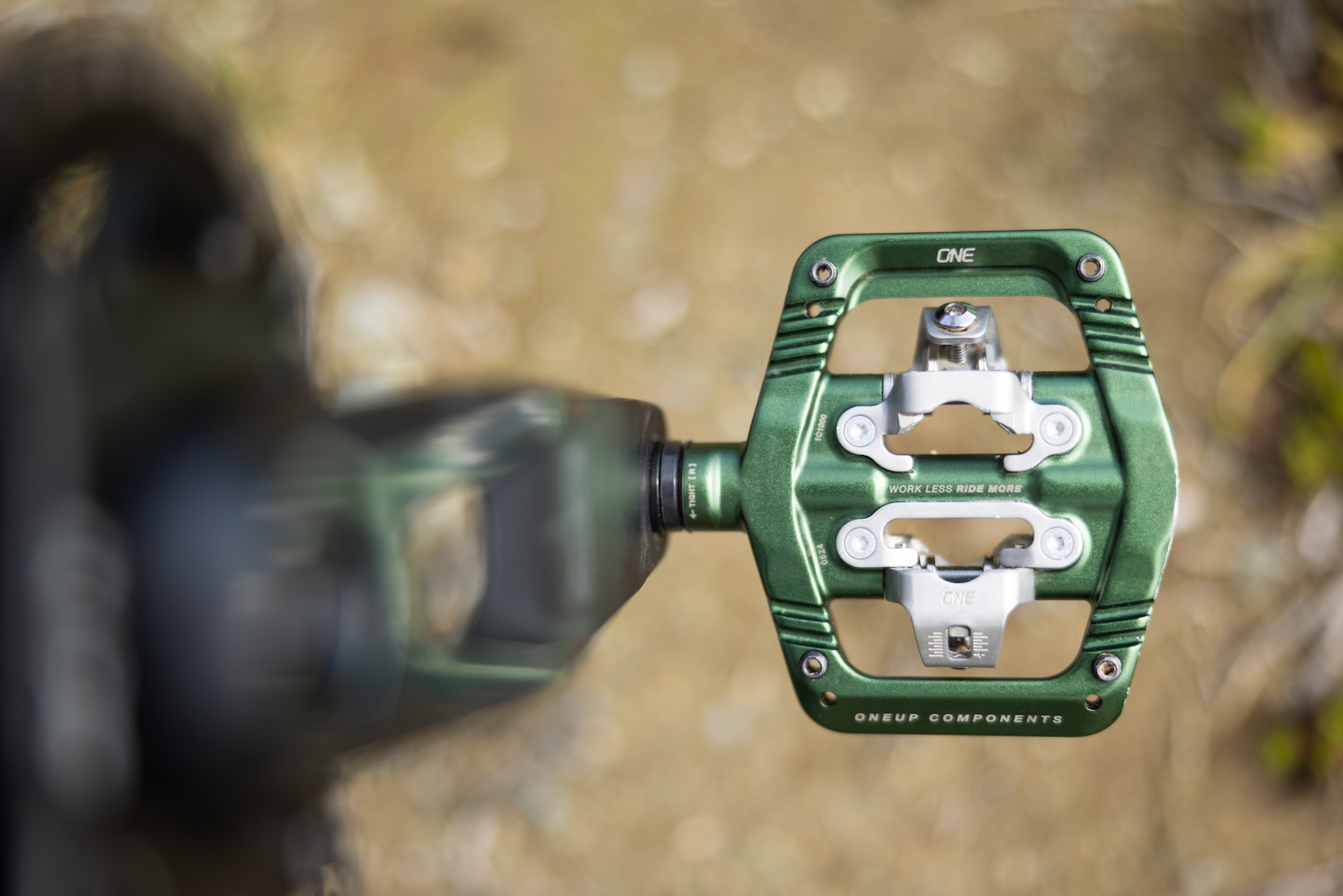
Design
Pedal Body
There are a few key elements of the new Clip Pedals that stand out — starting with the pedal size and shape. They’re especially thin, with the body measuring just 14.4 mm over the axle, and the total clip mechanism at 28.6 mm. Comparatively, the also notably slim HT X3 pedals that we love here at Blister are 14.3 mm over the axle, with a taller cleat mechanism that measures just over 29 mm.
The idea behind that thin platform is to help avoid pedal strikes from underfoot while also helping stability by keeping the shoe sole that much closer to the axle. It’s worth calling out though that OneUp’s claim of being “the thinnest mountain bike clip pedals in the world” doesn’t quite hold up when we’re talking body width over the axle (again, the HT X3 is 0.1 mm thinner) but the Clip Pedals are thinner than the HTs when including the clip mechanism.
[For reference, Shimano Saint SPD pedals have an 18.7 mm thick platform and 33 mm thick clip mechanism; XTR Trails come in at 17.1 and 29.9 mm, respectively.]
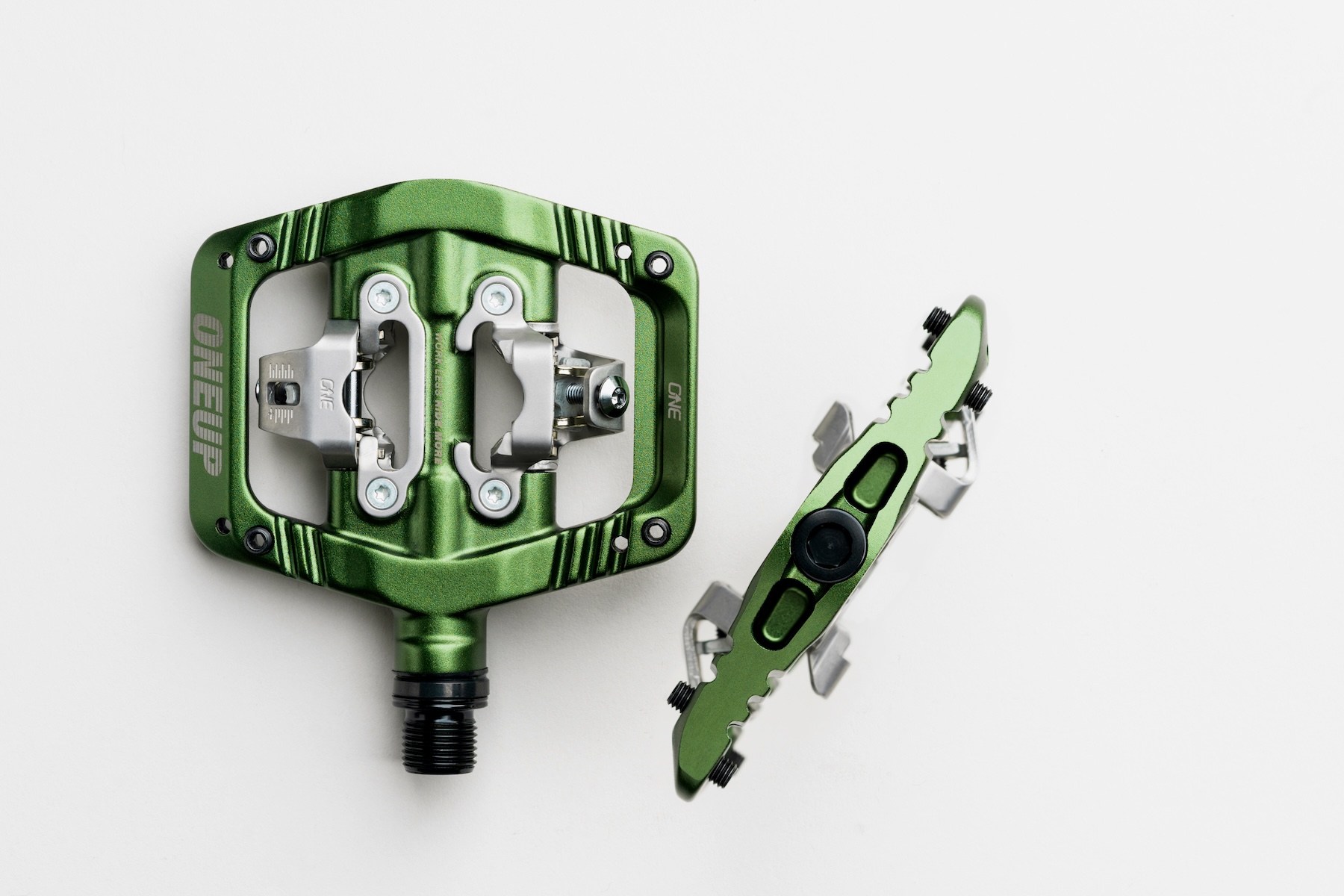
The Clip Pedal’s platform is also pretty sizable for its low 410 g weight, measuring 80 x 90 mm (width x length). That’s bigger than the 68 x 82 mm body of the Trail-oriented HT T2, but slightly smaller than the larger 85 x 91 mm platform of the Downhill-oriented HT X3. That’s still a rather sizable platform, and it’s in line with other gravity-oriented pedals.
Typically a bigger platform means higher weight, but OneUp has managed to keep the Clip Pedals fairly lightweight at 410 g per pair, even with the aluminum platform construction. Again using my preferred HTs as a comparator, the rather lightweight T2 undercuts the OneUps by about 30 g, while the OneUps have a nearly 60-gram edge on the heavier HT X3. It’s an impressive weight figure for such a big platform, and while true XC riders will still seek something lighter, packing a large pedal body into a lightweight package should appeal to a broad swath of Trail, Enduro, and Downhill riders.
That 410 g weight includes the pins, of which there are four per side. The pins are hollow and accessible from the backside of the pedal to make it a bit easier to swap them from the other side if one gets smushed — a nice touch. A chromoly steel axle turns on an inboard IGUS bushing and three cartridge bearings, and OneUp says the axles are DH-rated.
In typical OneUp fashion, there’s a boatload of colors to choose from (eight, in fact) so you can get as matchy as you’d like.
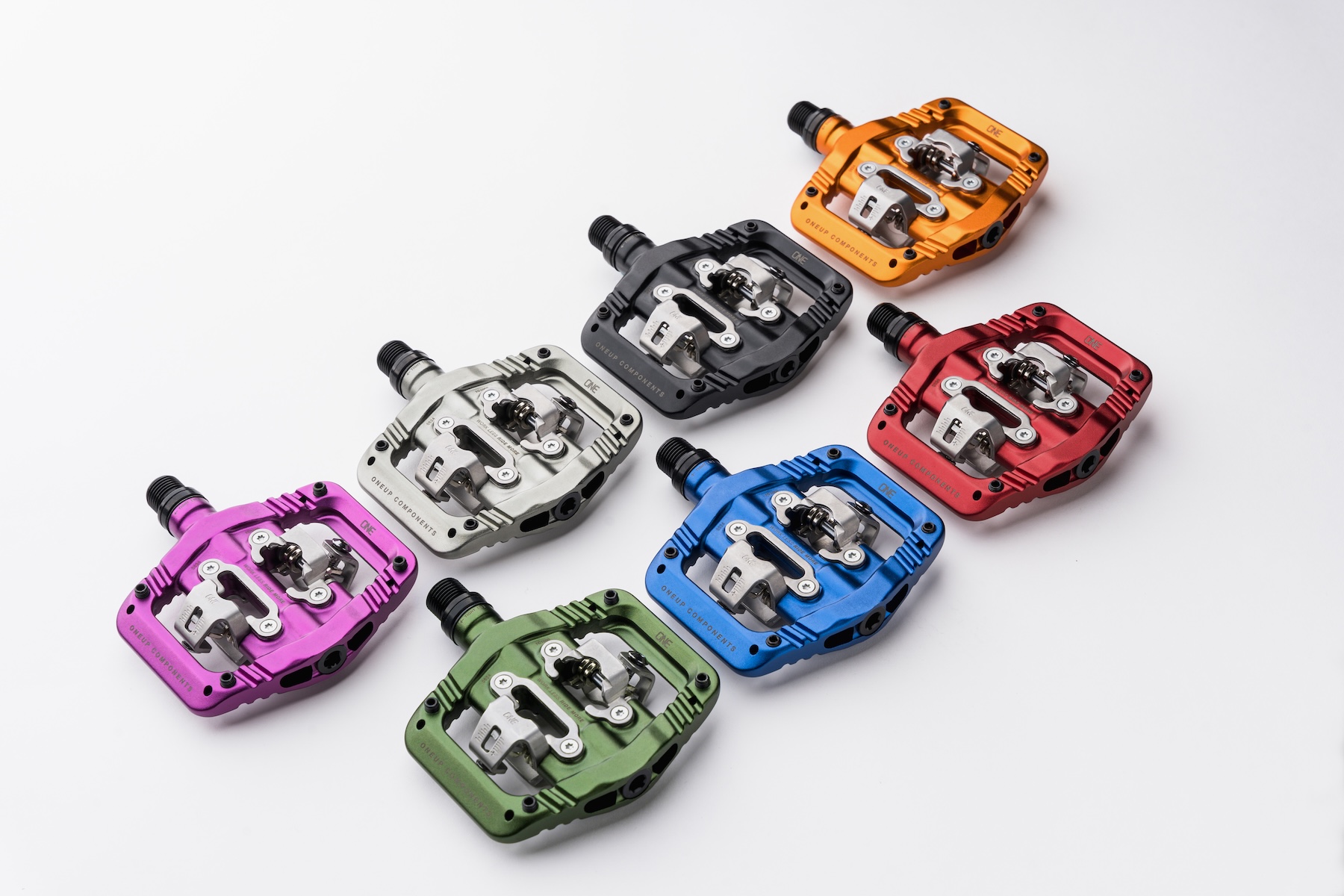
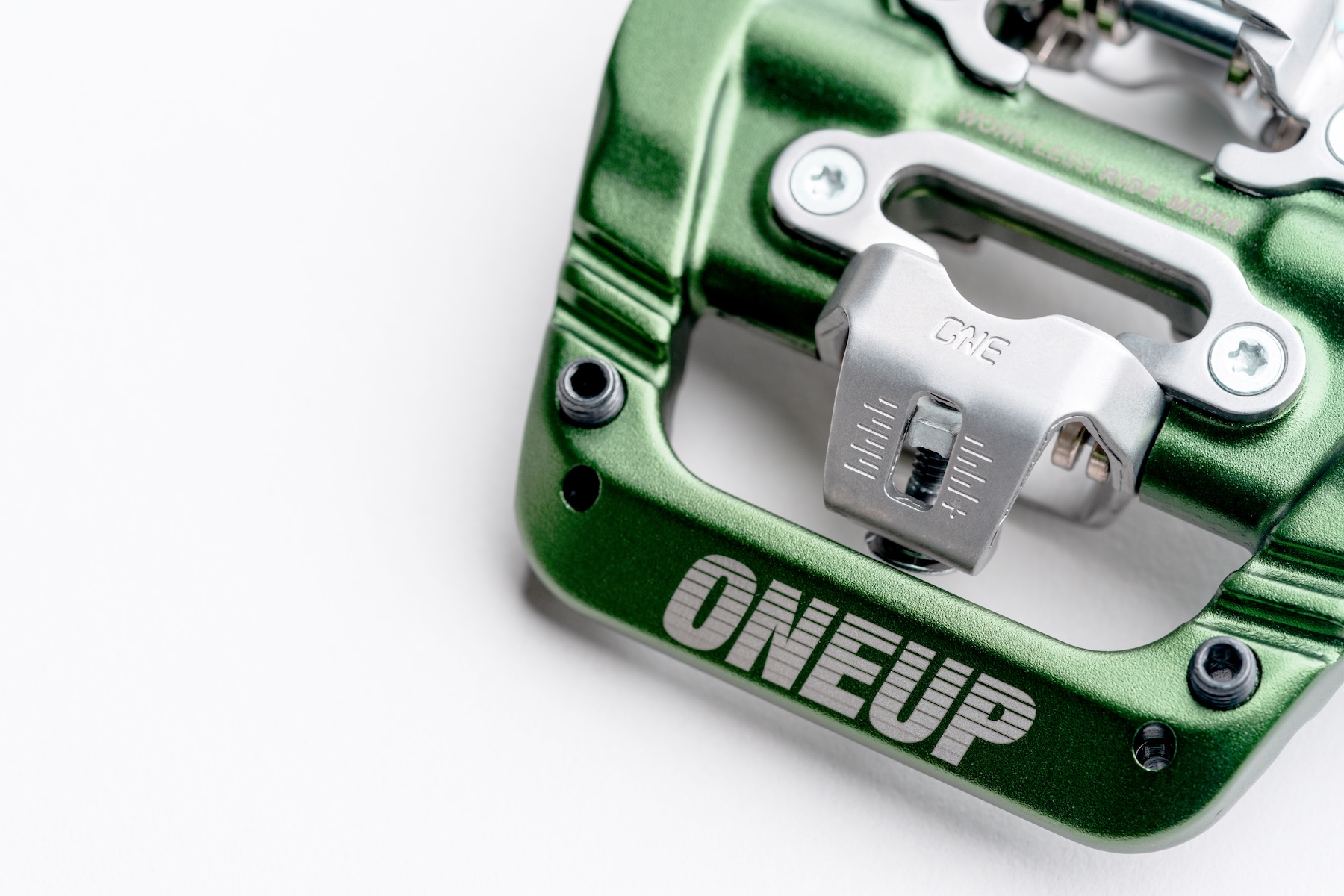
Mechanism
While the combination of a thin platform, low weight, and large footprint is impressive, the cleat mechanism is equally interesting. It’s a custom stainless steel design based on the tried-and-true SPD design for easy sourcing of replacement cleats but offers 5° of float and a 12° release angle. For reference, normal Shimano pedals with the standard cleat provide a stated 4° of float and a 13° release angle, as do HT pedals with their X1 cleats.
[It’s worth noting that stated float and release angles can be a little misleading — HT pedals with the X1 cleat feel more locked in / like they have less float than Shimano’s SPD pedals, despite the same nominal angles.]
Those float and release differences are quite minor, but the bigger differentiator is OneUp’s promise of a tighter cleat fit as well as higher possible release values. One of the big reasons that we’ve been so partial to the HT pedals here within Blister’s bike review team is the notably crisp release and higher possible release tension. If OneUp’s design can get closer to that HT feel while offering standard SPD cleat compatibility, it could be a very compelling design indeed.
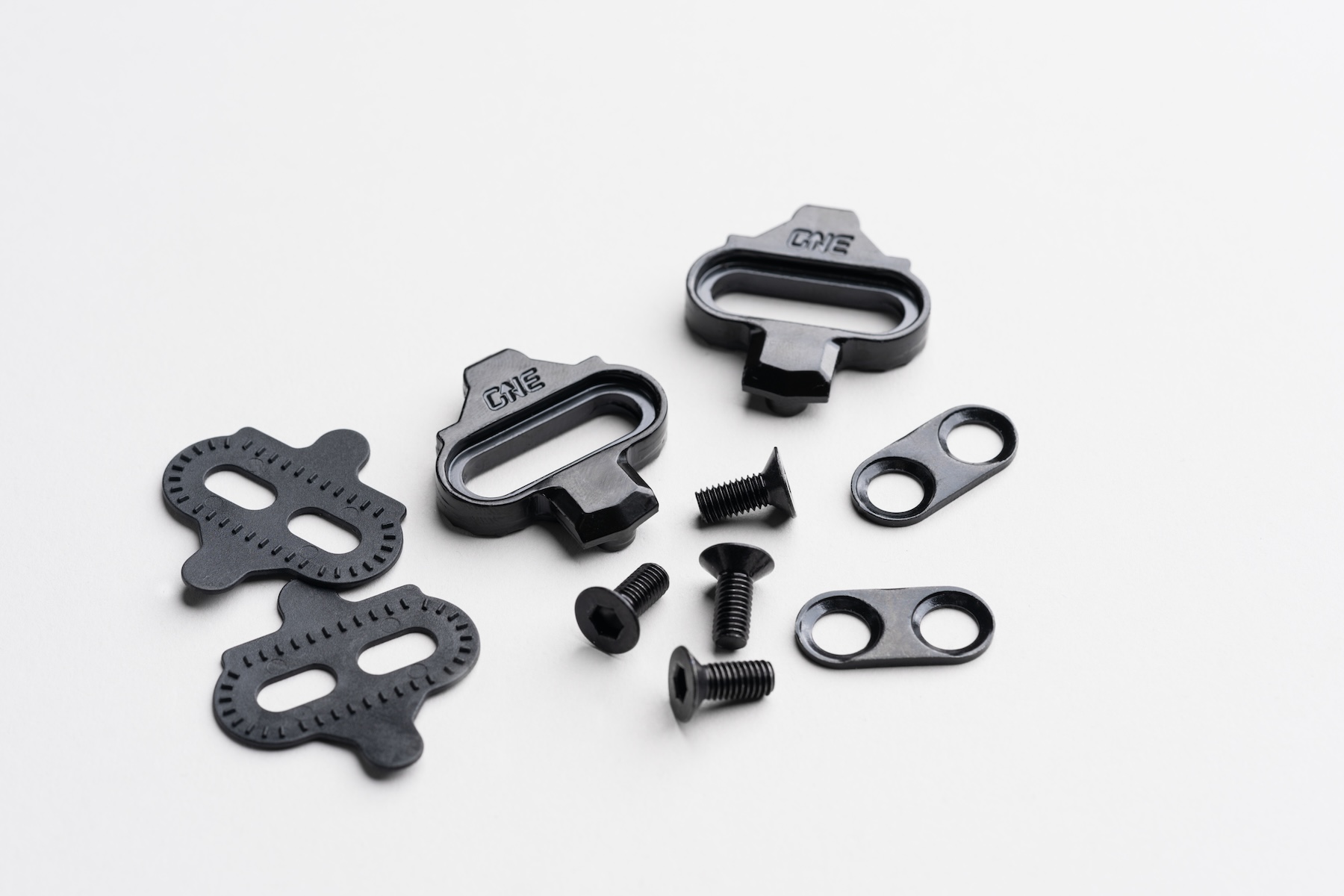
FULL REVIEW
The mountain bike clipless pedal market is dominated by just a few brands, and it’s a tough one to break into. Most clipless riders have an established preference for their mechanism of choice, and mixing and matching is a pain due to the need to run specific cleats in a given pedal.
So it’s not surprising that OneUp went with one of the most popular and longest-standing cleat designs for their Clip Pedals — the venerable SPD. But given that there are already a lot of good SPD-compatible pedals on the market, has OneUp managed to make theirs stand out?
Installation & Setup
Zack: OneUp’s Clip Pedals arrive with traction pins already installed in the pedal bodies — all that’s left for the buyer is mounting the pedals, bolting the cleats to your shoes, and off you go. OneUp also includes cleat spacers in case they’re needed, along with a thin-walled socket for pedal services down the line.
I tried the Clip Pedals with two different shoes, the Crank Brothers Mallet E and the recently updated Giro Chamber III. In both cases, I was able to get the cleats to work without requiring shims, but the pedal body contacts the shoe fairly firmly. Also, I removed all of the traction pins to prevent any unexpected interference when clipping out, which I do with most pedals. I want the release to be consistent and dictated only by the mechanism, and I’ve had issues in some cases with traction pins making for inconsistent clip-out behavior in tricky situations.
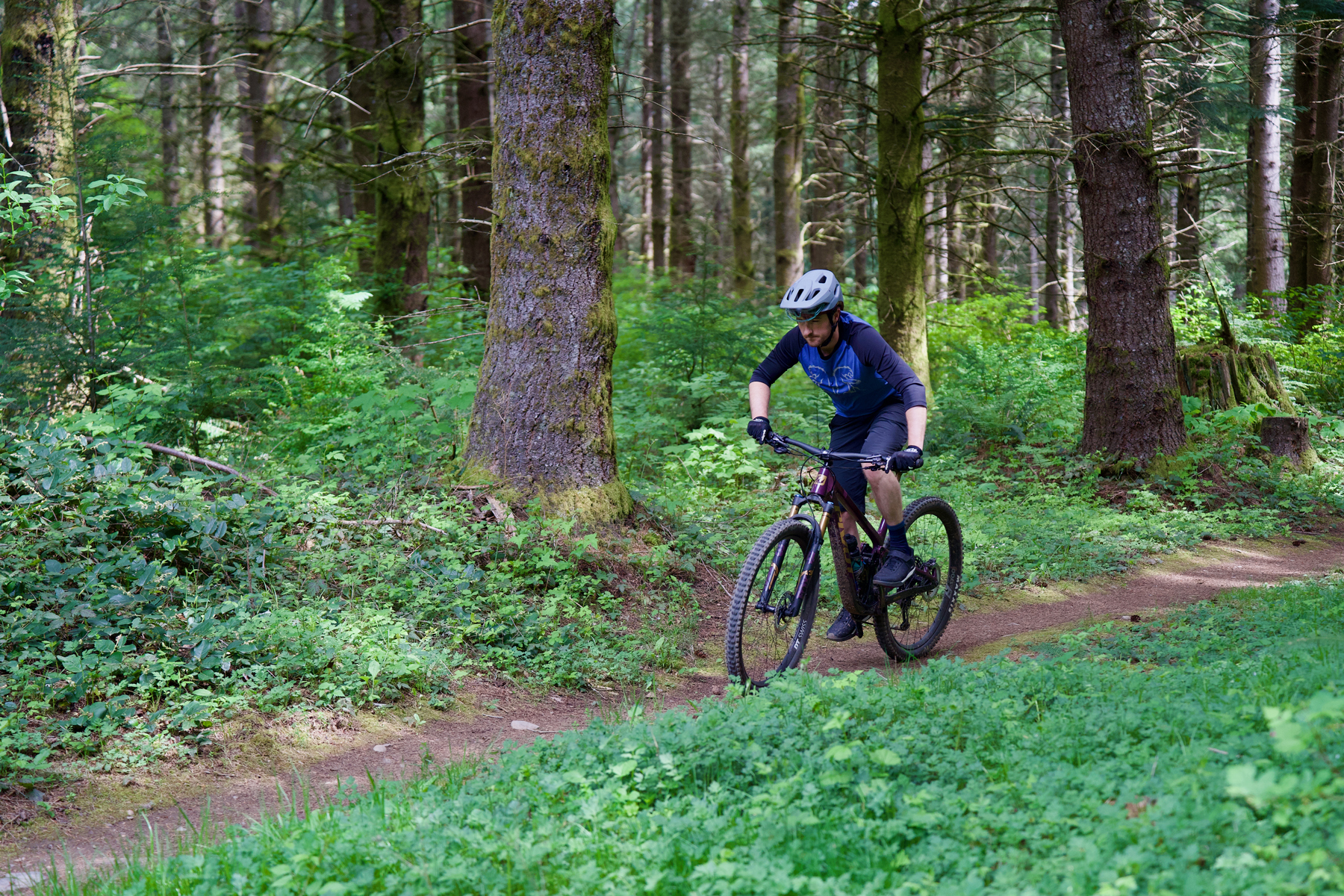
I’d also like to shout out OneUp’s packaging. Yeah, I know, it’s what’s in the box that counts, but it’s very impressive to see compact, nice-looking, and fully plastic-free packaging. There aren’t even zip ties used to secure the pedals in the box; OneUp uses a clever cardboard strip to keep the pedals secure and rattle-free. Someone clearly spent a lot of time thinking about this, and it’s well executed — that deserves recognition.
David: Unlike Zack, I tend to leave the traction pins in most clip pedals unless I find them to impede clipping out too badly, and I haven’t felt any need to with the Clip Pedals. I didn’t find myself needing the included cleat shims on any of the shoes I tried (Shimano GE9, Fox Union Boa, Specialized 2FO DH, and Crank Brothers Mallet Boa) either.
Otherwise, I don’t have anything to add — if pedal installation poses any issues, something has probably gone badly wrong, and that wasn’t the case here.
On the Trail
Zack: From the start, OneUp’s bespoke version of an SPD mechanism offers a much more positive engagement than I’ve experienced in traditional SPD designs. The cleats are still cross-compatible with regular SPD ones, but the binding mechanism seems to have less play, and the float range feels tighter and more controlled in how they build resistance up to the release point. Regular SPD designs can have an unnervingly loose and “skatey” feel for my tastes, sometimes leading to unexpected releases, and the OneUp Clip Pedals are a considerable upgrade in that regard. They still don’t build resistance in the addictively intuitive and progressive way that my preferred HT pedals do, but they’re not super far behind.
David: What constitutes “good” clip pedal feel is highly subjective, but my take is very similar to Zack’s. The Clip Pedals feel closer to Shimano SPD pedals than anything else I’ve tried in terms of how the cleat and pedal interface, but there’s less free play in the OneUp pedals than in most SPD pedals, including Shimano’s XT and XTR Trail ones (though the new XTR M9200 Race pedals have been tightened up compared to Shimano pedals of old). The Clip Pedals are also truly cross-compatible with SPD cleats — I’ve run Shimano SH51 cleats in the Clip Pedals with good results.
That reduction in free play is different from cutting back on float. The Clip Pedals still have a stated 5° (and feel similar to Shimano’s SPD pedals on that front), but there’s less movement in other directions within the mechanism (including fore-aft and side-to-side rocking). The Clip Pedals don’t feel as locked in as HT T2 or X3 pedals (with the lower-float X1 cleat), and they move through their float range with little resistance. The Clip Pedals are also able to run substantially higher release tension than Shimano XT / XTR Trail pedals, though they’re still fairly light with the tension backed off.
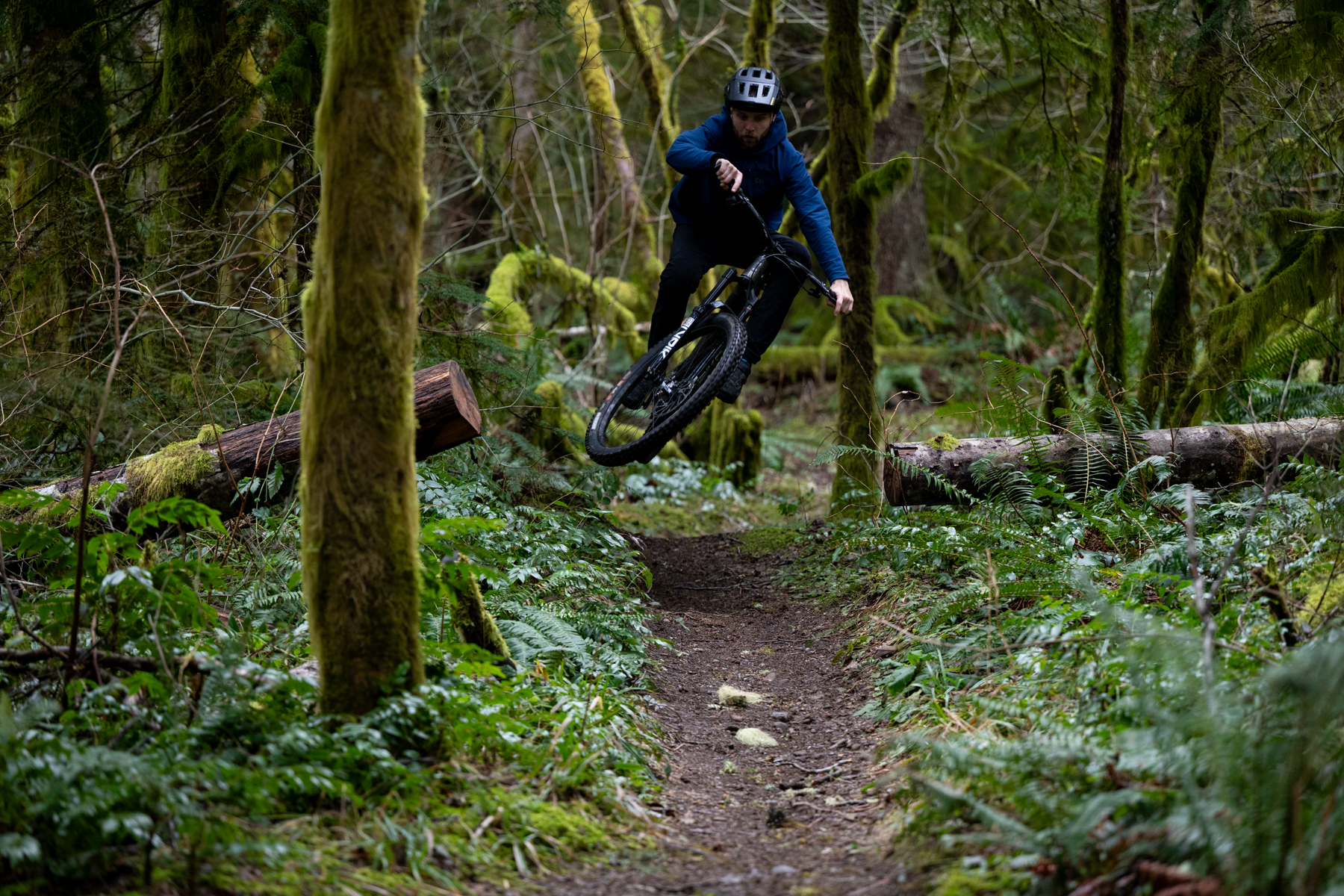
Zack: This story ends well, but before I continue with my longer-term impressions, let’s address the elephant in the room: OneUp had some initial issues with the mechanism on the Clip Pedals that created unpredictable clip-out behavior with some shoes. I, unfortunately, experienced those issues at the outset, and one particularly rainy ride had me throwing a bit of a tantrum as I struggled to clip out in some very consequential, cliffy terrain. After a few butt-puckering moments where I narrowly got a foot out before tipping off the mountainside, I decided I’d be taking a break from riding the Clip Pedals until I could track down some shoes that worked with them.
Within the same week, I got an email from OneUp about the issue with the mechanism, acknowledging an issue with the design of the binding plate that, when applying downward pressure, could cause the cleat to hang up and resist release. It was exactly the issue I was having, unfortunately manifesting during my most unplanned and urgent attempts to get out of the pedals.
Getting the new plates installed took a couple of months from when OneUp initially reached out, which slightly delayed testing, but it was good to see OneUp taking accountability for the issue. They proactively offered a solution to all buyers of the pedals and issued a “stop sale” on new ones going out while they addressed the problem. Production issues suck for the company and buyers alike, but OneUp did the right thing in being upfront about it.
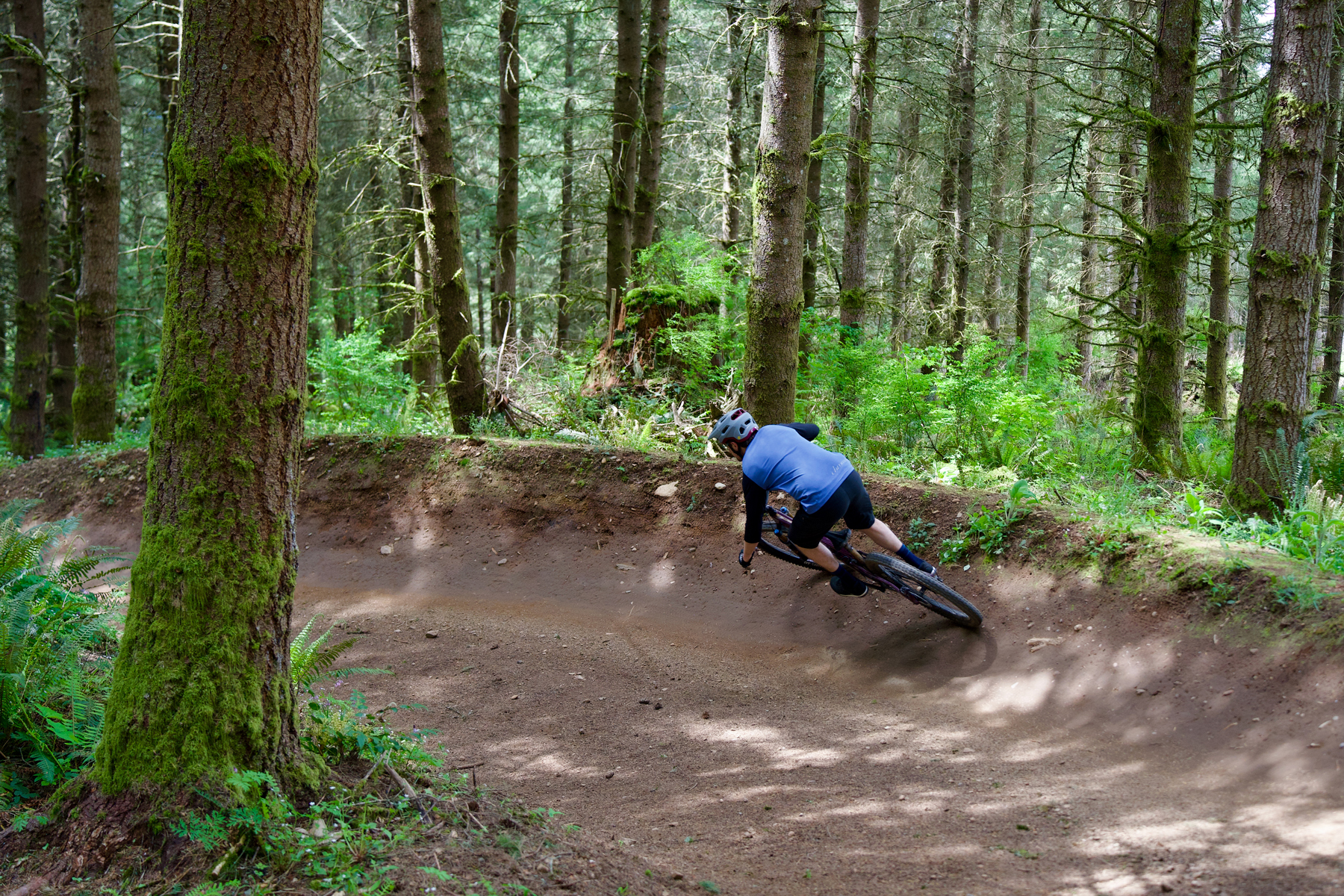
Happily, OneUp’s revised binding plate made the Clip Pedals play nice with my existing shoes, and it’s been smooth sailing since. The same tight cleat interface still felt more secure and intuitive over regular SPD designs, but now the pedals release consistently, too.
David: I also had some issues with the original binding plates (depending a lot on the shoes I was using — some worked much better than others), but the revised plates that OneUp now offers took care of the problem for me as well. Swapping in the new plates is a quick and easy job, and OneUp will send out the revised version to anyone with an early run of the Clip Pedals with the original plates.
Zack: OneUp also talks up the low-profile design of the Clip Pedals, and it’s been a nice feature. Thinner pedals not only dodge obstacles more easily but also lend a greater sense of stability by positioning the foot closer to the center of the axle. The Clip Pedals feel awfully close to the HT X3 pedals in that regard, which are my current high-water mark when it comes to a stable and low-profile feel. The Clip Pedals have a slightly smaller platform than the X3s and give up a touch of lateral stability, but avoid pedal strikes more consistently in exchange.
David: My preference for thin pedals has a lot more to do with foot stability on the pedal than it does pedal clearance, and, like Zack, the HT X3 has been my personal go-to for a while now. The Clip Pedals are essentially the same thickness (14.3 mm vs. 14.4 mm for the X3) but the more tapered, lower-profile platform on the Clip Pedals does feel a bit less prone to hanging up on hard impacts than the more blunt X3 body does at times. The tradeoff is that the Clip Pedals don’t interface with the sole of most shoes quite as fully and offer a little less support for it, but they feel appreciably more substantial than Shimano XT or XTR Trail pedals, for example.
Durability
Zack: The OneUp Clip Pedals have left me with no concerns on the durability front. The bearing system is robust and easily serviceable, though mine still turn like new despite regular immersion in springtime slop before our rainy season abated. The mechanism still feels tight and precise, and the solid aluminum pedal body has had no issues shrugging off some decent rock hits.
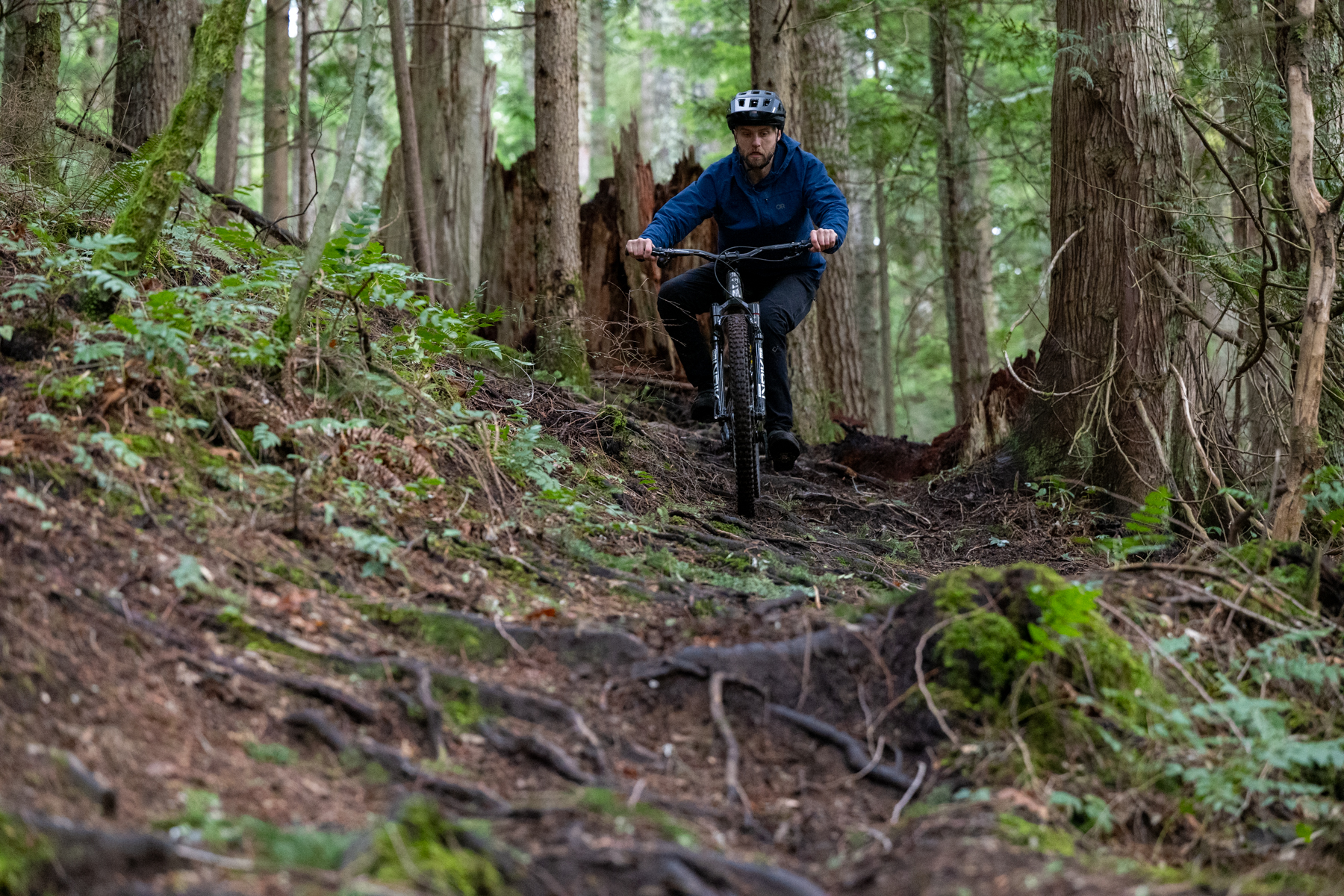
David: No issues with my pair, either. There’s some real tension between making thin pedals and keeping the bearings big enough to hold up, but OneUp seems to have walked that line pretty well. The sealing seems solid, the Clip Pedals have shrugged off some rock strikes with nothing more than minor scuffs, and the pins are all still intact.
Bottom Line
With the Clip Pedals, OneUp has pulled off something impressive: they took the most widely available cleat design but made real improvements to the function and feel of the mechanism. The result is a more progressive and secure-feeling engagement, along with a low-profile yet supportive surrounding platform. SPD fans who like the idea of a more progressive release and tighter cleat-to-pedal interface should find the OneUp Clip Pedals to be a tempting option.

I think XT Trail pedals or even the venerable M530 would be a better comparison.
We’ll comment on those too. We brought up the X3 because its combination of a notably secure / play-free clip mechanism and very thin profile match the two biggest attributes that OneUp is touting.
The X3’s platform size is more comparable too.
David: Can’t imagine the challenges of writing an introductory article on a product you haven’t yet tested! Such are the vagaries and incessant demands of internet websites and social media, eh? :-)
That said, you did a great AND HIGHLY CREDIBLE job of comparing a known vs. an “unknown” based on the tech specs ….. all you had to work with.
As a flat pedal MTB’er who uses the OneUp composite pedals (excellent, durable, inexpensive, etc.), I’d be interested in your future takes on: (1) why clipless pedals haven’t gone composite (or have they?); (2) will OneUp shake up the industry with such a pedal; (3) thank heaven the weight included the 4 pins for the weight weenies! :-).
Well, full credit to Zack for writing this one, but thanks for the kind words either way!
There have been a few clipless pedals that used a plastic outer cage in the past (most prominently the Shimano m424 and m647) and Time has done a few XC pedals with a composite body but they’re certainly the exception. My hunch is that building a composite body that can handle the stresses (especially in terms of screw pull-out) that a clipless mechanism induces gets tricky and requires advanced materials that get expensive. But that’s truly just a guess on my part.